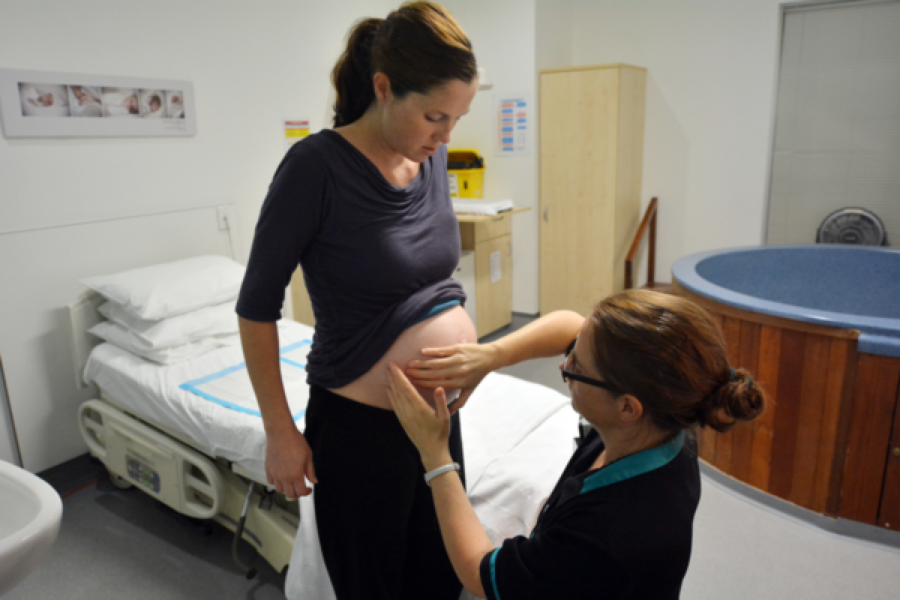
NEWS & RESEARCH
The History and Evolution of Certified Nurse Midwifery
-
 EveryNurse Staff
EveryNurse Staff
- Last Updated: 05/21/2023

Midwifery, the art of assisting women during pregnancy, childbirth, and postpartum, has been an integral part of human experience for millennia. Over the centuries, midwifery has undergone significant changes, with the emergence of certified nurse midwifery being a noteworthy leap towards modernity. This article explores the origins of midwifery, the emergence of certified nurse midwifery, key milestones in the field, the modern certified nurse midwife and the future of this noble profession.
The Origins of Midwifery
Midwifery is an ancient practice that dates back to the earliest civilizations. In ancient Egypt, midwives were respiratory therapists, providing breathing techniques to ease pain during labor and birth. In Greece, midwives were regarded as respected members of society, with Hippocrates, the ‘father of medicine,’ writing extensively on childbirth and the duties of midwives. In India, midwives are referred to as ‘dai’ and are believed to have been practicing for over 5000 years.
The practice of midwifery has evolved over time, but its origins are rooted in the ancient world. Midwives were highly respected members of society, and their skills and knowledge were passed down from generation to generation.
Ancient Midwifery Practices
In ancient cultures, midwives were revered for their knowledge and skills. Their practices were a blend of tradition, experience, and spiritual beliefs. Ancient midwives relied on observation of nature, intuition, and practical wisdom in carrying out their duties. They also used herbs, massages, and other techniques to relieve pain, induce labor and support mothers during birth.
Midwives in ancient cultures were also responsible for providing emotional support to mothers during labor and birth. They were skilled in creating a calming and supportive environment for the mother, which was believed to have a positive impact on the health of both the mother and the baby.
The Role of Midwives in Early Societies
Midwives were not only responsible for assisting women during childbirth in early societies but also played a significant role in healthcare delivery. They were also responsible for treating women’s health issues, handling pregnancies, and providing advice on family planning.
Midwives in early societies were often the only healthcare providers available to women, particularly in rural areas. They were skilled in diagnosing and treating a range of women’s health issues, including menstrual problems, fertility issues, and menopause. They were also knowledgeable about herbal remedies and other natural treatments for various health issues.
The Emergence of Certified Nurse Midwifery
The 19th century saw the emergence of nursing as a profession, with Florence Nightingale playing a pivotal role in elevating the status of nursing. Nursing brought with it several breakthroughs that led to better health outcomes for women and infants, including the development of aseptic techniques and antiseptics that helped control infections.
The Influence of Nursing on Midwifery
In the early 1900s, many states began to outlaw midwifery, arguing that childbirth should only be conducted by licensed physicians. This was a result of the medicalization of childbirth, where doctors began to take over the role of midwives. However, nurses, led by Mary Breckinridge, fought this trend and established nurse-midwife programs across the country.
Nurses argued that midwives provided a more personalized and holistic approach to childbirth, which focused on the needs of the mother and baby, rather than just the medical aspects of childbirth. This approach was especially important for women who lived in rural areas and did not have access to medical facilities.
The Development of Midwifery Education and Certification
In the 1920s, the development of standardized midwifery education and certification helped to streamline the profession and establish recognition for the knowledge and skills of midwives. The first midwifery education program was established in New York in 1922, and by the 1930s, several other programs had been established across the country.
The American College of Nurse-Midwives (ACNM) was formed in the 1950s, leading to greater acceptance and legitimacy of midwifery as a profession. The ACNM established standards for midwifery education and certification, and advocated for the integration of midwifery into the healthcare system.
Key Milestones in Nurse Midwifery
The midwifery profession has undergone significant milestones in its history. One of the most significant was the formation of professional organizations, including the ACNM, which has played a critical role in advocating for the recognition and advancement of the profession.
The Formation of Professional Organizations
The ACNM, formed in 1955, was instrumental in developing educational standards, promoting research, and advocating for political changes that would allow midwives to practice. Today the organization has over 7,000 members and works to promote the health and well-being of women and their families.
The Expansion of Midwifery Services
Since the formation of professional organizations, midwifery services have expanded to include a wide range of healthcare services, beyond pregnancy and childbirth. Midwives now provide reproductive and gynecological care, family planning, prenatal care, and general healthcare services to women and infants.
The Modern Certified Nurse Midwife
Today’s certified nurse midwife is a highly trained medical professional with a range of skills, including the ability to manage normal labor and birth, perform gynecological exams, write prescriptions and order diagnostic tests. They are also experts in providing evidenced-based care that focuses on maintaining natural physiological processes during pregnancy, labor and birth.
Scope of Practice and Responsibilities
The scope of practice of a certified nurse midwife includes attending to normal pregnancies and births, providing primary and reproductive healthcare to women of childbearing age, and working alongside other healthcare professionals to ensure optimal health outcomes for women and their infants.
The Importance of Evidence-Based Care
Certified nurse midwives provided evidenced-based care that is grounded in scientific research and the application of best-practice guidelines. This approach ensures that women receive the best possible care while respecting their autonomy and choices.
Midwives aim to empower women to take an active role in their healthcare, providing them with the education and resources they need to make informed decisions.
The Future of Certified Nurse Midwifery
The future of midwifery looks bright, with an increasing demand for midwifery services and recognition of the value midwives bring to the healthcare system. Midwives will play a critical role in addressing maternal health disparities across the world, by providing culturally congruent care that acknowledges diverse backgrounds and experiences. Technology will play an essential role in advancing midwifery, with electronic health records, telehealth, and other digital platforms helping to improve healthcare delivery to women and infants.
Addressing Maternal Health Disparities
Maternal health disparities continue to be a concern globally, with marginalized communities often bearing the brunt of maternal morbidity and mortality. Midwives will continue to play a pivotal role in reducing these disparities, by addressing the social determinants of health, providing culturally responsive care, and advocating for policy changes that improve access to healthcare services.
The Role of Technology in Midwifery Care
Advances in technology will revolutionize midwifery care, with digital platforms and tools helping midwives monitor maternal health, provide remote consultations, and expedite medical interventions when necessary. Telehealth and telemedicine will be crucial in ensuring access to healthcare services in rural and remote areas, where professional support can be limited.
















